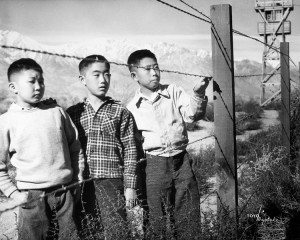A Letter from the Director
Greetings and Happy Spring Semester!
Recently a couple of exhibition projects we are developing at the Beach Museum of Art  have collided in a thought-provoking way with current events. Refugees are pouring into Europe from the war-torn Middle East and from desperate economic situations in parts of Africa. In the U.S. many are concerned about illegal border crossings from Central and South America. In some cases, fear, suspicion and even hatred creeps into discussion of these complex situations. The result can be that entire groups of people get stereotyped in negative ways.
have collided in a thought-provoking way with current events. Refugees are pouring into Europe from the war-torn Middle East and from desperate economic situations in parts of Africa. In the U.S. many are concerned about illegal border crossings from Central and South America. In some cases, fear, suspicion and even hatred creeps into discussion of these complex situations. The result can be that entire groups of people get stereotyped in negative ways.
On April 7, we will celebrate the opening of two exhibitions that reflect on the arrest and imprisonment of Americans of Japanese heritage during World War II. Artworks in Minidoka on My Mind: Paintings and Prints by Roger Shimomura employ the visual language of comic books and Japanese woodblock prints to convey the artist’s childhood memories of the concentration camp. Behind the Glass Eye: Photographs by Toyo Miyatake juxtaposes selected examples of Miyatake’s pre-war art photography with his images of life in the Manzanar camp – some photographed secretly before he was caught and, eventually, allowed by the authorities to serve as camp photographer.
Art can play a crucial role in helping all of us think about human nature and the kind of society we want to live in. Finding meaning in an art experience takes us into new and interesting territory. Differing interpretations are the norm; discussing these with others almost always leads to further discovery – related to the art, but also to understanding our fellow humans and ourselves. Art can teach people not simply to tolerate difference, but to value and protect its expression.
Sometimes people imagine that an ideal society, a utopia, would be free of the challenges that diversity entails. History offers evidence to the contrary. In his 1990 book Rethinking the Museum, Stephen Weil included a chapter called Art, Law, and Utopia. He described the utopian effort to banish “every trace of roughness, contingency, and conflict.” However, he wrote, “every conflict is not, as the utopian visionaries once projected, a sign of systemic dysfunction. On the contrary, we know that in a free society such conflicts may be nothing more than the inevitable consequence of the legitimately differing interests which constitute the very fabric of such a society. …. And we know … that given a choice between an on-going process of conflict resolution and a situation in which every clash of interests has finally and permanently been resolved, the latter can only be embraced at great peril. The utopian vision, no matter how alluring, is ultimately the vision of a society in which roughness, contingency, and conflict have been and must repeatedly again be repressed – and such a society is not by our standards a decent society.”
The museum staff has worked with various colleagues to plan programming for the Shimomura and Miyatake exhibitions, programs that we hope will provoke dialogue about mistrust of those whose appearance, culture, or language differs from one’s own – during World War II and now. Please visit the museum’s website to learn more about these special programs during April and May, mark them on your calendar, and encourage your friends to attend. The Beach Museum of Art is open every day except Monday, and until 8:00 pm on Thursdays. I hope to see you in the galleries soon!
Regards,
Linda Duke
Director, Marianna Kistler Beach Museum of Art